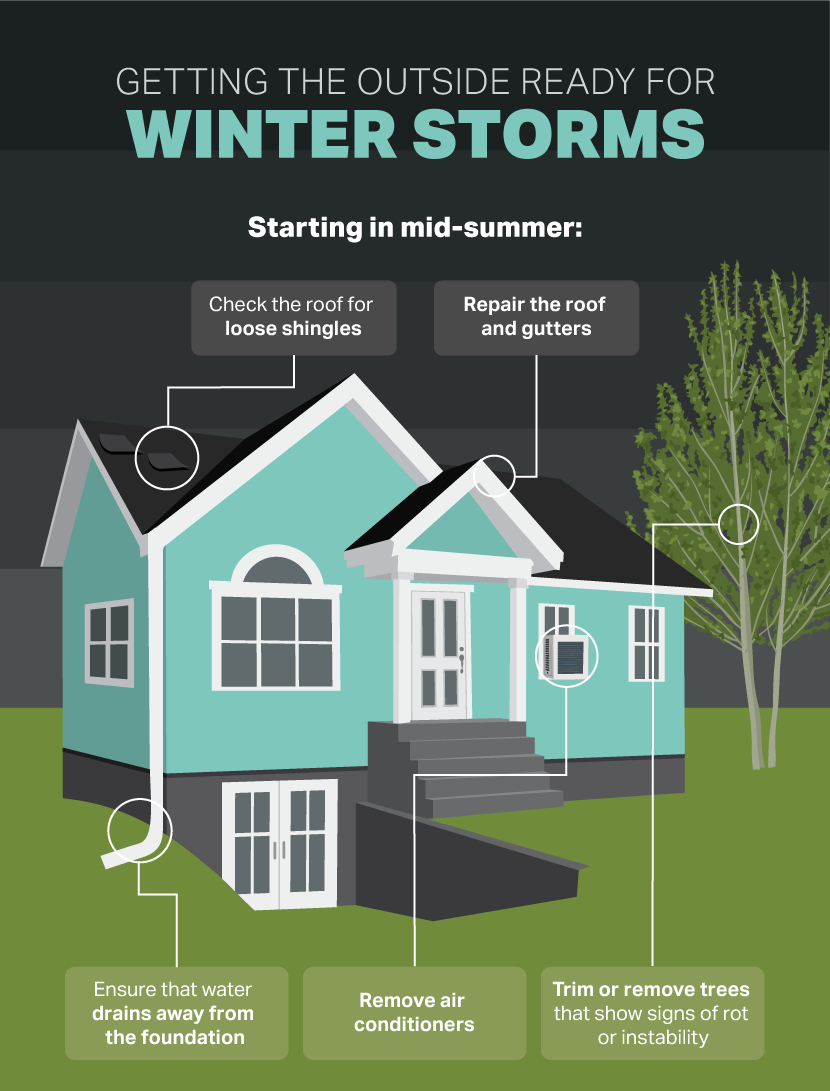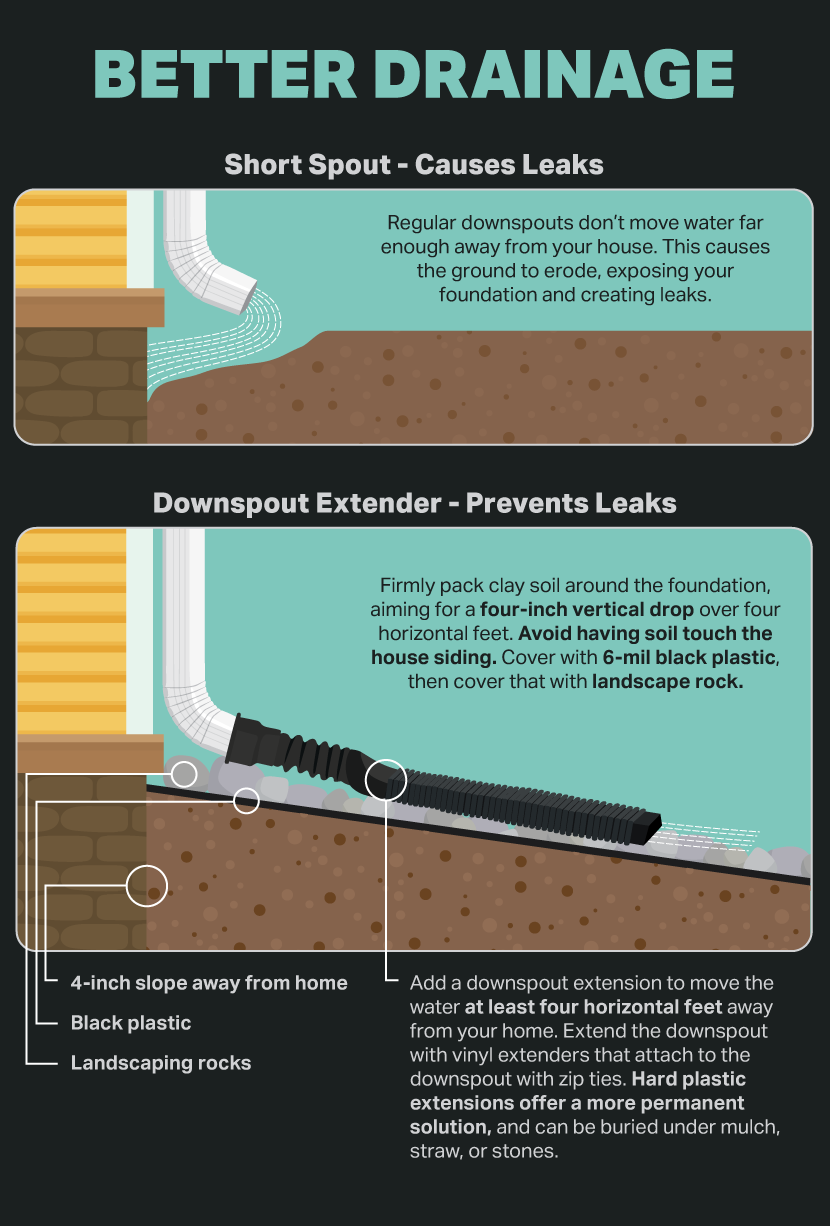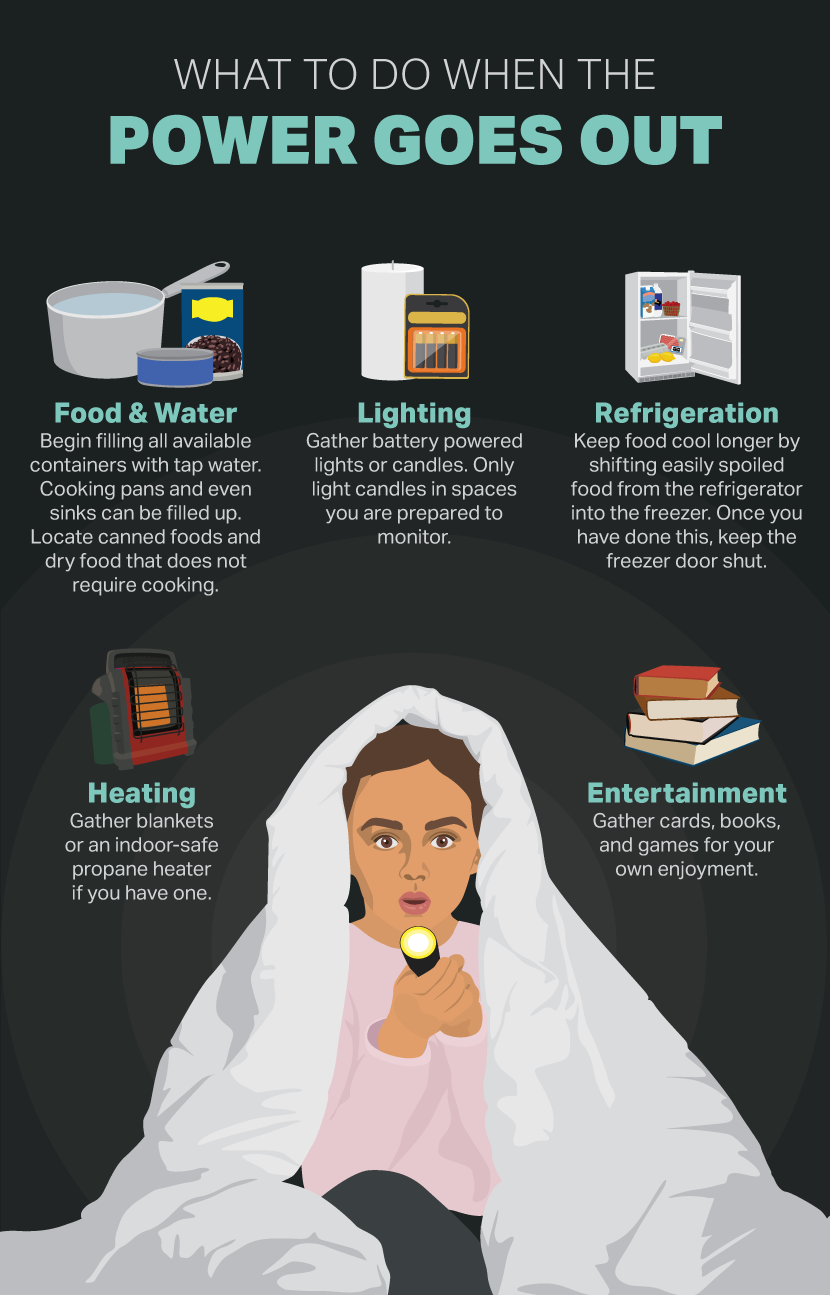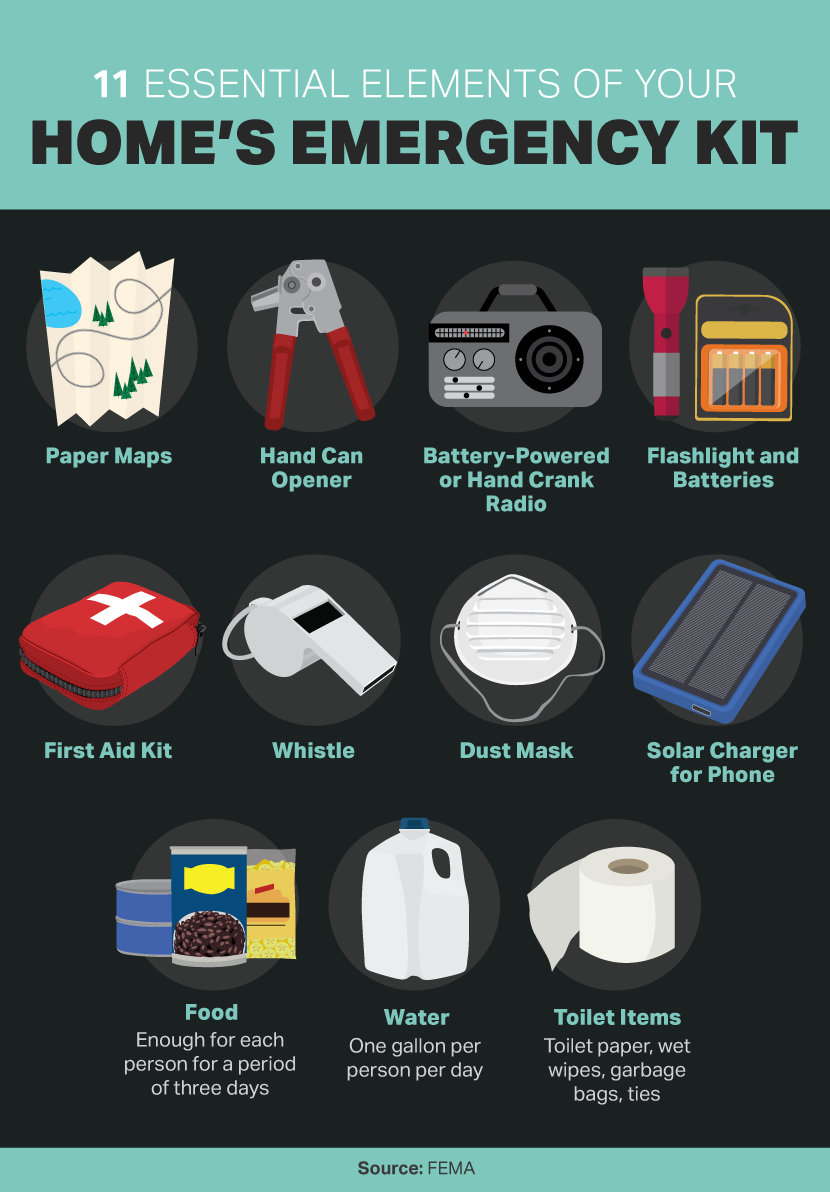Preparing for a Winter Storm
Fierce winter storms can cause havoc. But there is no reason they should completely overturn your life and endanger your well-being. Making preparations ahead of time can keep you and your family warm, healthy, and safe.
Secure and Prepare Your Home, Exterior, and Personal Property
Summer and early fall are prime seasons for preparing your home and yard for upcoming winter storms.
Think of your home as a ship on the verge of sailing into bad weather.
You need to clear hazards that are in close proximity and “batten down the hatches” by securing openings against water, wind, and other inclement weather.

Trim or Remove Trees
Trees are responsible for the majority of damage to homes and personal property during winter storms.
Your homeowner’s insurance may not protect you in the event of fallen limbs or trees.
According to insurance company Allstate, your homeowner’s insurance probably will not cover a fallen tree if the tree exhibited prior signs of rot or instability.https://www.allstate.com/tools-and-resources/home-insurance/tree-falls-on-house.aspx
- Trimming: Trimming is far less expensive than full removal. Crews can thin out the branches to reduce the “sail effect” when those high winter winds blow.
Trimming can also can balance out the tree’s load and keep one side from being heavier than the other, a condition that may topple the tree.
- Removing: Tree removal can entail a significant cost, especially in dense, metro areas where mobility is limited. The average cost to remove a large tree hovers in the $1,500 range, not including debris removal.
Many communities require that you apply for a tree removal permit or at least put in a written notification. In many cases, the permit or notice must be accompanied by an arborist’s report stating that removal is required.http://www.homeadvisor.com/cost/lawn-and-garden/tree-removal
Check Roof and Flashing Stability
High winds can loosen roof shingles. Walk your roof and inspect it carefully. Shingles that are obviously loose should be replaced by a qualified roofer.
The condition of the flashing – the metal sleeves around the chimney and other roof protrusions – is more difficult to visually determine. Have a contractor or roofer inspect these areas.
Promote Drainage Away from House
When storms hit, massive amounts of water are directed at your house over a short period of time. Re-grade the soil around your house so it declines away from the foundation.

Clean and Repair Gutters and Downspouts
One source of water damage to foundations and basements is downspouts that force water straight into the ground.
This can be easily and cheaply fixed by adding plastic downspout drainage lines that deposit the water away from the house.
Fix or replace gutters in the summer. Clean gutters in the early fall, as soon as all the leaves are off the trees.
Purchase Ice Melt
In areas prone to freezing weather, walkways and driveways can become dangerously icy. Purchase ice melt in early fall (it may not be in stock in stores earlier than that).
Calcium chloride is better than rock salt because it is less damaging to hardscaping and surrounding plants.
Remove Air Conditioners
By the end of summer, window unit air conditioners are no longer needed. A/C units are weak points for water intrusion.
Even if there is a tight seal between the unit and the window, water can still enter through the back of the unit. Remove them and stow them away.
Remove Screens and Install Storm Windows
Depending on your climate, you can likely keep the windows open for a month or two past summer’s end.
Eventually, though, it is good practice to remove the screens, wash them down, and store them until the following summer.
Exterior retrofit storm windows can protect your windows against light debris impact and wind-blown rain, snow, and sleet.http://www.energy.gov/energysaver/storm-windows
Clean Chimneys for Wood-burning Fireplaces
Wood-burning fireplaces build up creosote, an oily black substance that can cause chimneys to internally ignite. Hiring a chimney sweep is the most effective way to rid your flue of creosote.http://www.csia.org/homeowner-resources/the_facts_about_chimney_fires.aspx
However, the Chimney Safety Institute of America (CSIA) endorses one product, Joseph Enterprise’s Creosote Sweeping Log, as being acceptable for do-it-yourself creosote cleaning.http://www.csia.org/homeowner-resources/CSL_Creosote_Sweeping_Log.aspx
Prepare Your Home’s Interior and Yourself
Dealing with exterior issues during the summer, when the weather is fair, gives you more time and leeway to tackle interior areas as winter approaches.
Tune-Up Your Heating System
Bringing in a technician to conduct a furnace “tune-up” is like your biannual dentist’s visit for teeth cleaning: you can miss it sometimes, but it is highly recommended that you do every year.
The greatest value in doing the tune-up before winter storms is that you can accomplish it on your own terms.
If you wait until your furnace dies during a storm, you will be at the mercy of overtasked HVAC companies, their tight schedules, and their often-inflated pricing.
Learn How to Shut Off the Water Main and Gas
Quick – Do you know where your water main and gas shut-off valves are located? If you cannot answer this question off the top of your head, you need to find out now.http://www.familyhandyman.com/plumbing/valves/how-to-locate-your-gas-shutoff-valve-and-water-shutoff-valve/view-all
Water main valves are typically located within the house on the perimeter, facing the street. Gas valves are located outside the house near the gas meter. Most gas and water shut-off valves require a special tool that costs less than $15.
Install Emergency Lighting
Emergency lighting is your protection against fumbling around in the dark when the power goes out. Available for less than $20, these lights stay plugged into outlets so they are always charging.
When power to the outlet is cut off, they automatically turn on.http://gizmodo.com/wireless-emergency-lights-can-brighten-up-your-next-pow-1538615338
Mr. Beams ReadyBright is a popular brand of emergency house lighting. However, cheaper generic versions are available at most hardware and department stores.
Create a Family Emergency Plan
Creating a family emergency plan is as simple as printing and filling out a form that is available at the FEMA website.https://www.ready.gov/make-a-plan
This plan lists phone numbers, addresses, and medical information for all family members. Because both power and cell phone reception can go down in storms, it is valuable to have all this information available in hard-copy form.

When the Power Goes Out
With winter storms come power outages. Even large, highly reliable power systems, such as California’s Pacific Gas & Electric company, report that customers may expect one power outage per year on average.https://www.pge.com/en_US/residential/outages/planning-and-preparedness/safety-and-preparedness/grid-reliability/electric-reliability-reports/electric-reliability-reports.page
Make sure you know how you will address these five key concerns when the power goes out:
- Heating: Whole-house heating is difficult during a power outage. Even fireplaces will heat only one room. Do not light barbecues or propane heaters indoors; doing so can lead to carbon monoxide poisoning.
Instead, look for propane heaters that are rated as indoor-safe or bundle up with blankets and coats.
- Lighting: Battery powered lights are always safest. However, candles and hurricane-style kerosene lamps can also be used indoors.http://urbansurvivalsite.com/ways-to-light-your-home-when-the-power-goes-out/
- Food and Water: As soon as you lose power, begin filling all available containers with tap water.
Cooking pans and even sinks can be filled up. If the municipal water source stops flowing, this will be your water for daily use. Canned foods and dry food that does not require cooking are best for long power outages.
- Refrigeration: You can keep food cool longer by shifting easily spoiled food from the refrigerator (eggs, greens, meat, seafood, etc.) to the freezer. Once you have made the transition, avoid opening the freezer door if possible.
- Entertainment: If the power outage continues for days, you will need entertainment that does not depend on electricity. Cards, books, and games are just a few of the activities people tend to turn to when the electricity has failed.

Preparing an Emergency Kit
The FEMA Basic Disaster Supplies Kit consists of the following items:https://www.ready.gov/kit
- Water: One gallon per person per day
- Food: Enough for each person for three days; canned, dried, and freeze-dried food have the longest shelf lives
- Battery-powered or hand-crank radio
- Flashlight and batteries
- First-aid kit
- Whistle
- Dust mask
- Toilet paper, wet wipes, garbage bags, and ties
- Manual can opener
- Paper maps
- Solar charger for phones
Preparing for a winter storm is usually far easier than most people expect, and it pays off huge dividends in the event of a crippling storm.
Embed the article on your site

